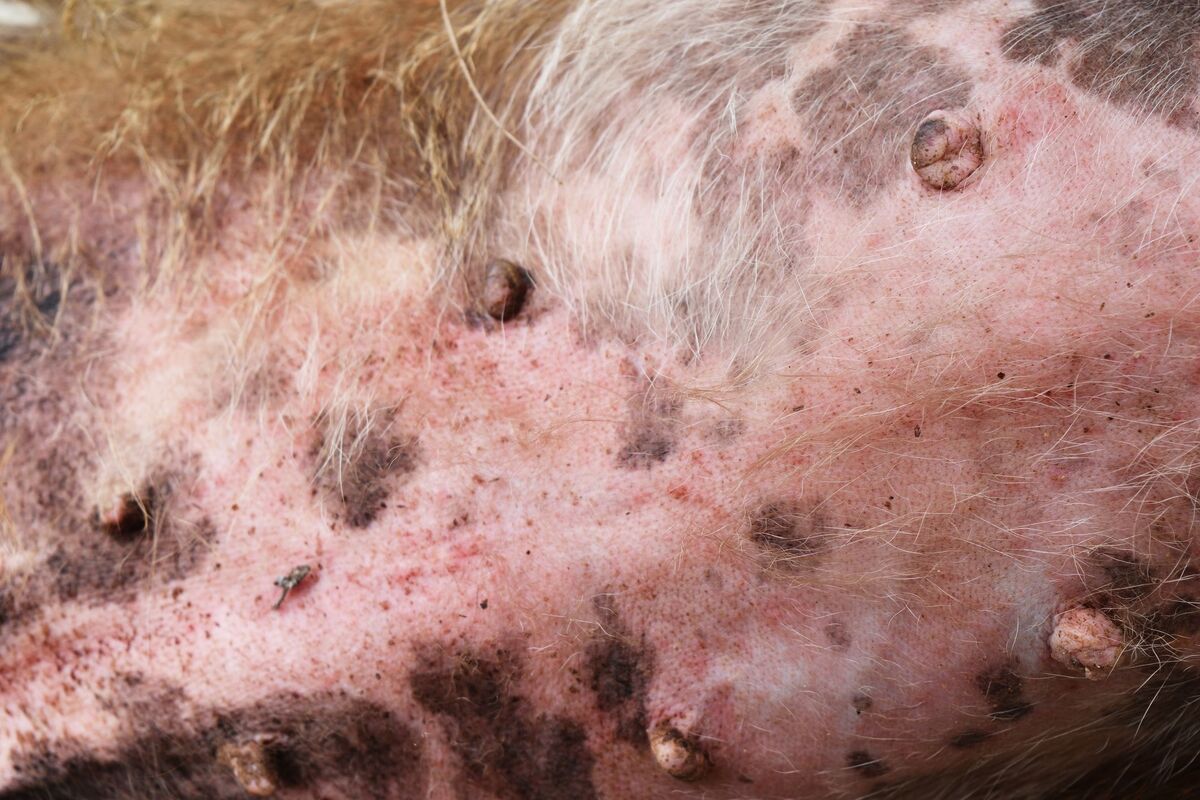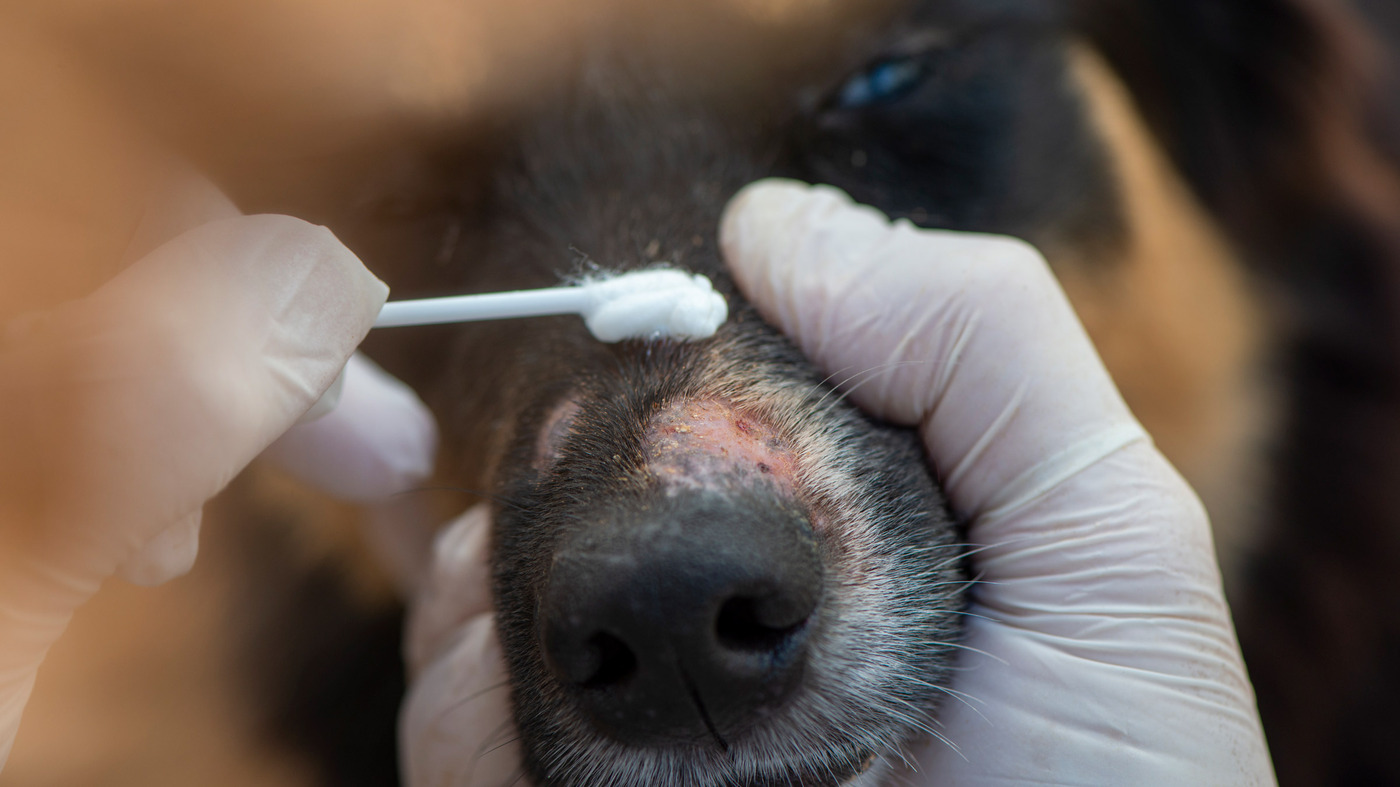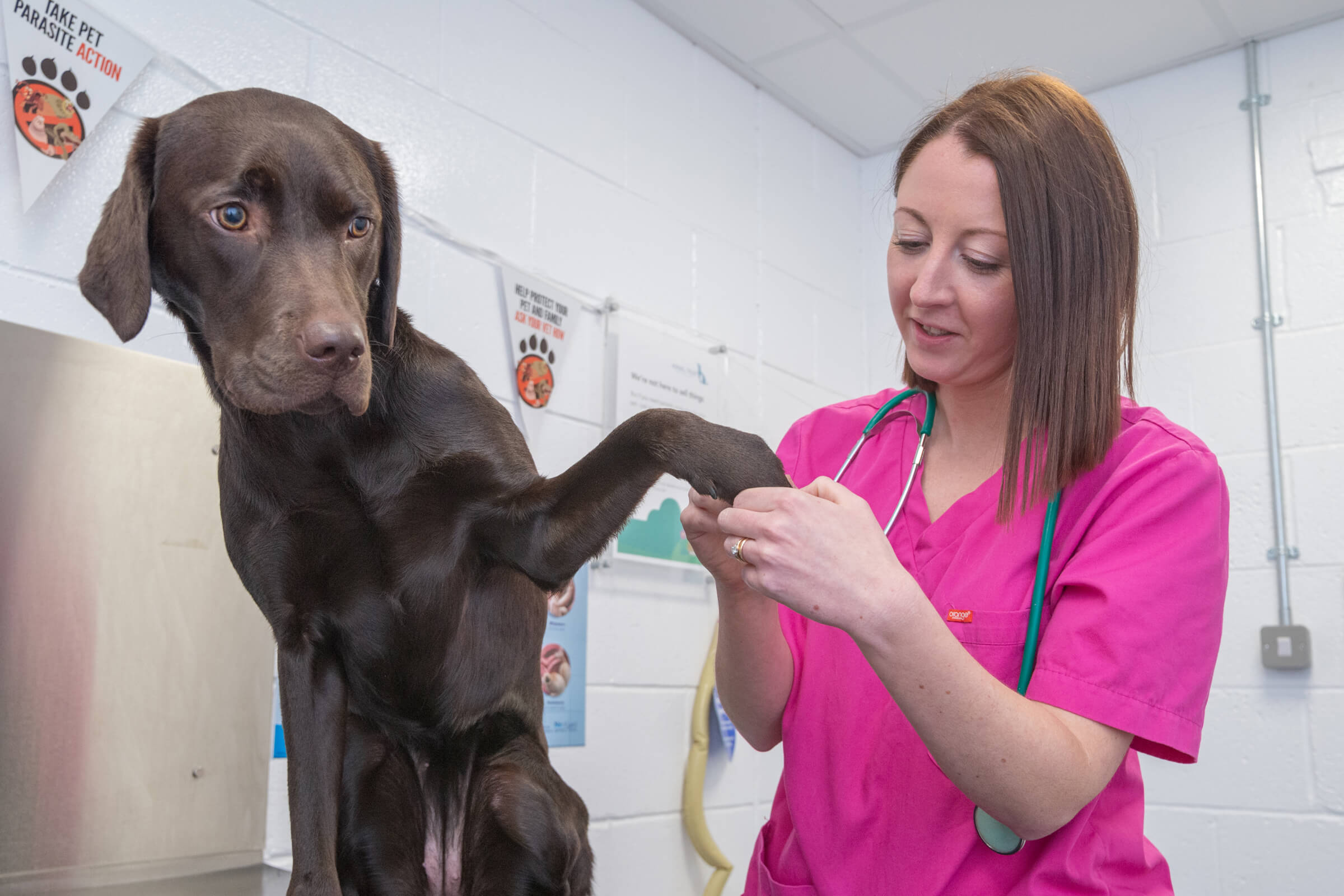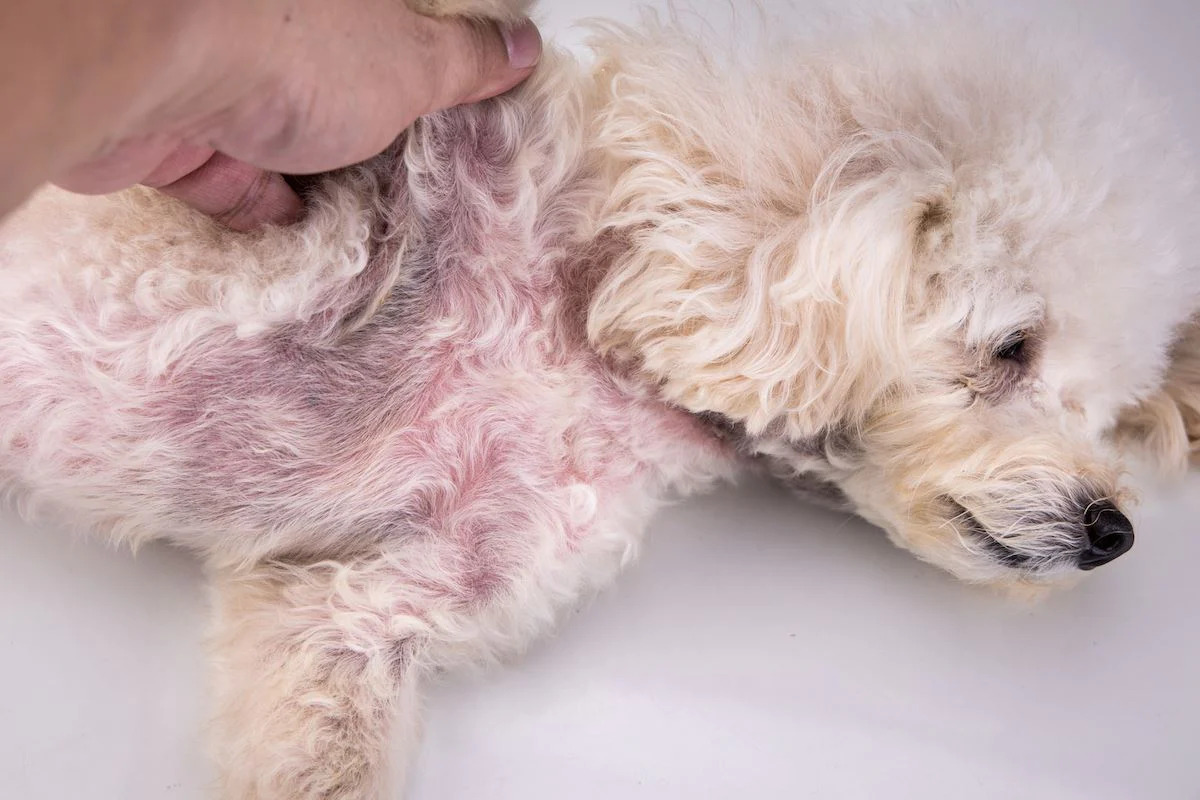Home>Health & Wellness>Common Health Issues>How To Treat Dogs With Skin Allergies


Common Health Issues
How To Treat Dogs With Skin Allergies
Published: January 27, 2024
Learn how to manage common health issues in dogs, including skin allergies. Discover effective treatments and tips to keep your furry friend healthy and happy.
(Many of the links in this article redirect to a specific reviewed product. Your purchase of these products through affiliate links helps to generate commission for Pawsomeoldies.com, at no extra cost. Learn more)
Table of Contents
Introduction
Skin allergies are a common health issue that affects many dogs, causing discomfort and distress. Just like humans, dogs can experience allergic reactions to various environmental factors, food ingredients, and parasites. These allergies can manifest in a variety of ways, including itching, redness, inflammation, and skin infections. As a responsible pet owner, it's crucial to understand the causes, symptoms, and treatment options for skin allergies in dogs to ensure the well-being of your furry companion.
Skin allergies can significantly impact a dog's quality of life, leading to incessant scratching, licking, and chewing of the affected areas. This behavior not only exacerbates the skin irritation but can also result in secondary infections. Additionally, the constant discomfort can lead to behavioral changes, affecting the dog's overall demeanor and happiness.
In this comprehensive guide, we will delve into the intricacies of skin allergies in dogs, shedding light on the common triggers, treatment options, and practical tips for managing these allergies at home. By gaining a deeper understanding of this prevalent health issue, you'll be better equipped to recognize the signs of skin allergies in your dog and take proactive measures to alleviate their discomfort.
Understanding the underlying causes of skin allergies and familiarizing yourself with effective treatment approaches is essential for providing your canine companion with the care and support they need. Together, let's embark on a journey to unravel the complexities of skin allergies in dogs and discover the best ways to address this common health concern.
Understanding Skin Allergies in Dogs
Skin allergies in dogs, also known as allergic dermatitis, refer to a hypersensitive reaction of the skin to certain substances in the environment or diet. These allergies can be broadly categorized into three main types: flea allergy dermatitis, atopic dermatitis, and food allergies. Understanding the distinct characteristics of each type is crucial for accurately identifying and addressing the underlying causes of skin allergies in dogs.
Flea allergy dermatitis is one of the most common skin allergies in dogs and is triggered by an allergic reaction to flea saliva. Even a single flea bite can incite an intense allergic response, leading to severe itching, redness, and skin irritation. Atopic dermatitis, on the other hand, is a genetic predisposition to environmental allergens such as pollen, mold, and dust mites. Dogs with atopic dermatitis often exhibit symptoms like itching, recurrent ear infections, and inflamed skin, particularly in the paws, ears, and armpits. Food allergies, while less prevalent, can also provoke skin allergies in dogs, causing symptoms like itching, gastrointestinal disturbances, and chronic ear infections.
The hallmark sign of skin allergies in dogs is incessant scratching, licking, and chewing of the affected areas. This behavior is a manifestation of the discomfort and irritation experienced by the dog due to the allergic reaction. As a result, the skin may become inflamed, leading to hair loss, hot spots, and secondary bacterial or yeast infections. Additionally, dogs with skin allergies may display behavioral changes, such as restlessness, irritability, and decreased activity levels, as they grapple with the persistent discomfort.
Understanding the nuanced nature of skin allergies in dogs is pivotal for implementing effective management and treatment strategies. By recognizing the specific triggers and symptoms associated with each type of skin allergy, pet owners can work in tandem with veterinarians to devise tailored approaches to alleviate their dog's discomfort and enhance their overall well-being.
Identifying Common Triggers for Skin Allergies
Identifying the common triggers for skin allergies in dogs is pivotal in effectively managing and mitigating the discomfort experienced by our furry companions. By pinpointing the specific allergens that incite allergic reactions, pet owners can take proactive measures to minimize their dog's exposure to these triggers and alleviate their symptoms.
-
Environmental Allergens: Pollen, mold, and dust mites are prevalent environmental allergens that can provoke allergic dermatitis in dogs. These microscopic particles can infiltrate the air, carpets, and outdoor spaces, triggering allergic reactions upon contact with a dog's skin or respiratory system.
-
Flea Saliva: Flea allergy dermatitis, a common skin allergy in dogs, is caused by an allergic reaction to proteins present in flea saliva. Even a single flea bite can lead to intense itching and skin irritation, making it crucial to implement rigorous flea control measures to prevent allergic reactions.
-
Food Allergens: Certain ingredients in a dog's diet, such as beef, chicken, dairy, wheat, and soy, can act as allergens, prompting adverse reactions in sensitive individuals. Identifying and eliminating these allergenic components from the dog's diet is essential in managing food-related skin allergies.
-
Contact Allergens: Dogs can develop allergic reactions upon direct contact with certain substances, including cleaning products, pesticides, and grooming products. Identifying and avoiding these potential irritants can help minimize the risk of skin allergies.
-
Bacterial and Yeast Infections: While not allergens in the traditional sense, bacterial and yeast infections can exacerbate existing skin allergies, leading to heightened inflammation and discomfort. Addressing these secondary infections is crucial in managing skin allergies effectively.
By recognizing these common triggers for skin allergies in dogs, pet owners can work in collaboration with veterinarians to devise tailored strategies for mitigating their dog's exposure to allergens and alleviating their symptoms. This proactive approach is instrumental in enhancing the overall well-being and comfort of dogs affected by skin allergies.
Consulting with a Veterinarian
Consulting with a veterinarian is a crucial step in effectively addressing skin allergies in dogs. When a dog exhibits symptoms of skin allergies, seeking professional veterinary guidance is essential for accurate diagnosis, personalized treatment plans, and ongoing support. Veterinarians possess the expertise to conduct comprehensive evaluations, identify specific allergens, and recommend tailored approaches to alleviate a dog's discomfort and improve their quality of life.
During the consultation, the veterinarian will conduct a thorough physical examination of the dog's skin, assessing for signs of inflammation, redness, lesions, and secondary infections. Additionally, they may inquire about the dog's medical history, including previous allergic reactions, dietary habits, and environmental exposures. This holistic approach enables the veterinarian to gather pertinent information and formulate a comprehensive understanding of the dog's condition.
In some cases, veterinarians may recommend diagnostic tests to pinpoint the underlying causes of the skin allergies. These tests may include skin scrapings to detect parasites, skin cytology to identify bacterial or yeast infections, and allergy testing to determine specific allergens triggering the dog's reactions. By leveraging these diagnostic tools, veterinarians can make informed decisions regarding the most effective treatment strategies for each individual dog.
Based on the findings from the examination and diagnostic tests, the veterinarian will collaborate with the pet owner to devise a tailored treatment plan. This plan may encompass various elements, such as flea control measures, dietary modifications, topical or oral medications to alleviate itching and inflammation, and recommendations for managing environmental triggers. Moreover, the veterinarian may provide guidance on preventive measures to minimize the risk of future allergic reactions, empowering pet owners to proactively safeguard their dog's well-being.
Furthermore, ongoing communication with the veterinarian is vital for monitoring the dog's progress, adjusting treatment regimens as needed, and addressing any emerging concerns. Regular follow-up appointments enable veterinarians to assess the dog's response to treatment, make refinements to the management plan, and provide continuous support to both the pet and their owner.
In essence, consulting with a veterinarian is a cornerstone of effective management of skin allergies in dogs. By leveraging their expertise, pet owners can gain valuable insights, access targeted treatment options, and foster a collaborative partnership aimed at enhancing their dog's comfort and overall health.
Treatment Options for Skin Allergies
Addressing skin allergies in dogs necessitates a multifaceted approach that encompasses various treatment options tailored to the specific triggers and symptoms exhibited by the affected canine. By collaborating closely with a veterinarian, pet owners can explore an array of therapeutic interventions designed to alleviate discomfort, mitigate allergic reactions, and enhance the overall well-being of their furry companions.
Read more: Why Are Dog’s Skin Allergies Worse At Night
Flea Control Measures
For dogs afflicted with flea allergy dermatitis, implementing rigorous flea control measures is paramount. This involves utilizing veterinarian-recommended flea prevention products, such as topical spot-on treatments, oral medications, or flea collars. Additionally, regular vacuuming of indoor spaces, washing the dog's bedding, and maintaining a flea-free environment are integral components of flea control strategies.
Dietary Modifications
In cases where food allergies contribute to skin allergies in dogs, dietary modifications play a pivotal role in managing the condition. Veterinarians may recommend hypoallergenic or novel protein diets to identify and eliminate potential food allergens. These specialized diets are formulated to minimize the risk of adverse reactions and provide essential nutrients to support the dog's skin health.
Medications for Symptom Management
To alleviate the itching, inflammation, and skin irritation associated with allergic dermatitis, veterinarians may prescribe medications such as antihistamines, corticosteroids, or cyclosporine. These medications aim to modulate the immune response, reduce itching, and alleviate discomfort. Additionally, topical treatments, such as medicated shampoos, sprays, or ointments, can provide relief by soothing the affected skin and combating secondary infections.
Immunotherapy
Immunotherapy, also known as allergy shots, may be recommended for dogs with atopic dermatitis. This treatment involves administering gradually increasing doses of specific allergens to desensitize the dog's immune system and reduce allergic reactions over time. Immunotherapy is a long-term approach that can effectively manage atopic dermatitis and diminish the severity of symptoms.
Read more: How To Treat My Allergies To Dogs
Environmental Management
Minimizing a dog's exposure to environmental allergens is a fundamental aspect of managing skin allergies. This may involve implementing measures such as regular bathing to remove allergens from the skin and coat, using air purifiers to reduce indoor allergens, and modifying outdoor activities during peak pollen seasons to mitigate allergic reactions.
Addressing Secondary Infections
In cases where bacterial or yeast infections exacerbate skin allergies, veterinarians may prescribe antibiotics, antifungal medications, or medicated shampoos to combat these secondary infections. By addressing these concurrent issues, the overall management of skin allergies can be significantly enhanced.
By integrating these diverse treatment options, pet owners can work in tandem with veterinarians to devise comprehensive strategies for managing skin allergies in dogs. Each approach is tailored to the unique needs of the individual dog, aiming to alleviate discomfort, minimize allergic reactions, and foster a thriving, allergy-free life for our beloved canine companions.
Managing Skin Allergies at Home
Managing skin allergies at home is a crucial aspect of ensuring the ongoing comfort and well-being of dogs affected by allergic dermatitis. By implementing proactive measures and creating a supportive environment, pet owners can play a pivotal role in minimizing their dog's exposure to allergens and alleviating the symptoms associated with skin allergies.
Environmental Control
Creating an allergen-free environment within the home can significantly reduce the impact of environmental allergens on dogs with allergic dermatitis. Regular cleaning, including vacuuming carpets, washing bedding, and using air purifiers, can help minimize the presence of pollen, dust mites, and other airborne allergens. Additionally, maintaining a clean and well-groomed living space can contribute to a healthier and more comfortable environment for dogs prone to skin allergies.
Read more: How To Treat Dog Paws With Allergies
Bathing and Grooming
Regular bathing and grooming routines are essential for managing skin allergies in dogs. Bathing with a veterinarian-recommended hypoallergenic shampoo can help remove allergens from the dog's skin and coat, providing relief from itching and irritation. Furthermore, routine grooming, including brushing and coat maintenance, can contribute to the overall skin health of the dog, reducing the impact of allergens and promoting a comfortable and itch-free existence.
Dietary Considerations
In cases where food allergies contribute to skin allergies, adhering to a specialized diet recommended by the veterinarian is paramount. Pet owners should diligently follow dietary guidelines, avoiding potential allergens and ensuring that the dog's nutritional needs are met. By providing a well-balanced and hypoallergenic diet, pet owners can actively support their dog's skin health and minimize the risk of allergic reactions stemming from dietary triggers.
Preventive Measures
Implementing preventive measures at home can help mitigate the risk of allergic reactions and minimize the impact of skin allergies on dogs. This may include regular flea control to prevent flea allergy dermatitis, using pet-safe cleaning products to minimize contact allergens, and being mindful of outdoor activities during peak pollen seasons. By proactively safeguarding the home environment, pet owners can create a safe and comfortable space for their dogs, reducing the likelihood of allergic flare-ups.
Monitoring and Observing
Consistent monitoring and observation of the dog's skin condition and behavior are essential for gauging the effectiveness of the management strategies. Pet owners should remain vigilant for any signs of itching, redness, or discomfort, promptly addressing any emerging symptoms or concerns. By maintaining open communication with the veterinarian and staying attuned to the dog's well-being, pet owners can play an active role in managing their dog's skin allergies at home.
By embracing these proactive measures and integrating them into the daily care routine, pet owners can create a supportive and nurturing home environment for dogs with skin allergies. This hands-on approach not only minimizes the impact of allergens but also fosters a comfortable and thriving existence for our beloved canine companions.
Read more: How To Treat A Dog With Eye Allergies
Conclusion
In conclusion, skin allergies in dogs are a prevalent and distressing health concern that can significantly impact the well-being of our canine companions. Understanding the diverse triggers, symptoms, and treatment options for skin allergies is pivotal for pet owners seeking to provide comprehensive care and support for their dogs. By delving into the intricacies of skin allergies and embracing proactive measures, pet owners can play a pivotal role in alleviating their dog's discomfort and fostering a thriving, allergy-free life.
Through this comprehensive guide, we have explored the multifaceted nature of skin allergies in dogs, shedding light on the distinct types of allergic dermatitis, including flea allergy dermatitis, atopic dermatitis, and food allergies. By recognizing the nuanced characteristics of each type, pet owners can gain valuable insights into the specific triggers and symptoms associated with their dog's skin allergies, empowering them to take targeted measures to address the underlying causes.
Consulting with a veterinarian emerges as a cornerstone of effective management, enabling pet owners to leverage the expertise of veterinary professionals in diagnosing, treating, and monitoring skin allergies in dogs. The collaborative partnership between pet owners and veterinarians is instrumental in devising tailored treatment plans, implementing preventive measures, and ensuring ongoing support for dogs grappling with allergic dermatitis.
Furthermore, the diverse treatment options, including flea control measures, dietary modifications, medications, immunotherapy, and environmental management, offer a holistic approach to alleviating discomfort and mitigating allergic reactions. By integrating these therapeutic interventions, pet owners can proactively address their dog's skin allergies, striving to enhance their overall comfort and well-being.
Managing skin allergies at home is equally pivotal, as pet owners can create a supportive environment by implementing environmental control, bathing and grooming routines, dietary considerations, and preventive measures. This hands-on approach fosters a nurturing and allergen-free home environment, minimizing the impact of skin allergies and promoting a comfortable existence for dogs affected by allergic dermatitis.
In essence, by gaining a deeper understanding of skin allergies in dogs and embracing proactive measures, pet owners can embark on a journey to provide their canine companions with the care, support, and comfort they deserve. Through collaboration with veterinarians, diligent management at home, and a steadfast commitment to the well-being of their dogs, pet owners can navigate the complexities of skin allergies, striving to foster a thriving and allergy-free life for their beloved furry companions.











